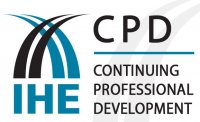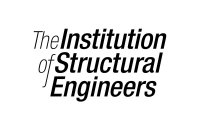This course is intended for newcomers to the industry or those with some general inspection experience looking to move into bridge (including retaining walls, subways, and culverts) inspection under suitable supervision. The course does not consider design aspects associated with bridges, but an appreciation of structural behaviour would be a benefit when carrying out inspections.
The course will discuss the background of the LANTRA Bridge Inspection Certification Scheme (BICS), the fundamentals of planning and undertaking safe inspection of bridges, the use of inspection and the Client's in-house model of Bridge Condition Index (BCI) (Typical industry model of Bridge Condition Index (BCI) if an open course) data to determine online maintenance regimes and the elements of determining BCI.
The course will focus on steel and concrete structures, but will not discuss complex or underwater structures.
Aims & Objectives:
Learning outcomes:
To understand the requirement for bridge inspections, how the inspections are undertaken, typical defects and how the information gained is used.
On completion of this course, delegates will be able to:
- Appreciate the requirement for bridge inspections
- Appreciate the guidance and requirements of DMRB CS 450 "Inspection of Highway Structures"
- Locate background of historical information prior to inspection
- Understand the requirement for safe access during inspections
- Appreciate and start to identify typical defects with concrete and steel structures
- Appreciate the use of the BCI codes and ratings following a bridge inspection
Course Outline:
- The requirements for undertaking bridge inspections - why do we need to do them?
- Examples of historic failures of highway structures
- The different types of inspections - general, principle, special inspections and inspections for assessment (access, detail, frequency, outcome)
- Background of BICS and requirements
- Definition of a bridge or retaining wall - dimensional range
- Guidance and requirements of DMRB CS 450 "Inspection of Highway Structures"
- Planning a highway structure inspection; RAMS, access, traffic management, timing
- Gaining an understanding of the history of a structure prior to inspection - review of previous inspections, BCI and other records
- Access - working on railways, highways, overwater, MEWP, underbridge units, boats and pontoons, roped access, demountable towers, lone working
- Arrival on-site - review of structure against records; dynamic risk assessment - is it safe to proceed with inspection, is the description in historical reports correct, has the condition significantly changed
- Concrete structures - types; bridges, retaining walls (including clad walls); subways; culverts and pipes
- Typical defects, concrete structures (generic) - leached deposits, spalling, cracking, debonding, active seepage, wetness/dampness, vegetation, graffiti, mechanical, exposed rebar, rust staining, deflection, deformation
- Typical defects, concrete structures - bridge elements such as deck, parapet stringcourse, piers, abutments, wing walls, bearings/articulation, waterproofing, parapets (all materials), movement joints; retaining walls (the significance of coatings)
- Steel structures - types; bridges; prefabricated or built-up culverts (Asset or similar); weathering steel
- Typical defects, steel structures - bearings and articulation, buckling, deflection, alignments and distortion, coatings, corrosion, mechanical, thermal, missing bolts and members
- Typical defects, environmental - erosion and scour
- BCI codes and ratings - use of Client specific codes, rating for the overall structure, basis of opinion, outcome, budgets and programme
Mode of Delivery:
PowerPoint delivery online in small groups with participation and discussion encouraged including:
- Tutor presentation with visual aids
- Individual and group exercises
- Discussion
- Feedback activity
Benefits of Attending:
- An understanding of the need to undertake bridge inspections
- Preparation for assisting on bridge inspections
- Preparation for assisting in reporting on bridge inspections
Intended For:
Graduate engineers and technicians, newcomers intending to undertake or participate in bridge inspections. Also useful for those organising and interfacing with bridge inspections.
Pre-Course Requirements:
None, but having a copy of CS 450 available during the course would be of benefit.








